
S**t Happens
(written by Dr. Les Crocker, Emeritus Professor of Art History)
With thanks to J. S. who has shoveled a lot of muck.

A typical city buggy on 10th Street in La Crosse. Seen here are the Rev. and Mrs. L. M. Brigham in the carriage, while Mrs. Tenney and Mrs. Smith are standing, circa 1875
You probably don't think about digestive waste products very much, except your own of course. But what to do with the leftovers after digestion is finished has always been a problem since humans settled in villages. But this isn't about human waste, which polluted many wells in La Crosse, but about horse manure.
A lightweight buggy horse produced 20 to 30 pounds of manure every day. A mid-weight working horse for delivering goods around town would drop 30 to 40 pounds while a beer wagon horse would pass 50 pounds or more a day. Every day! And of course, there is the two to six gallons of urine to complicate the problem.
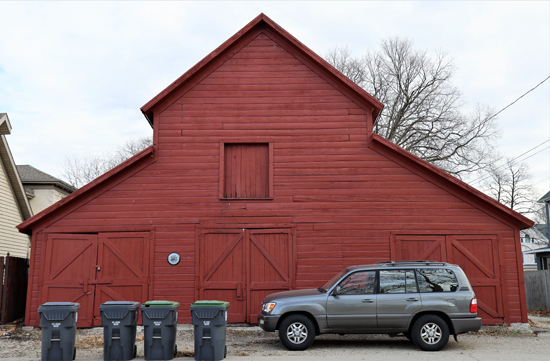
A current (2021) view of an unusually large barn survivor looking much the same as it had in its pre-1900 days, complete with three carriage bays and a very tall central chamber for storing hay and straw. Located on an alley between King and Cass and Eighth and Ninth streets.

The barn or stable is represented in this 1906 Sanborn Fire Insurance Map view in pink and the house highlighted in purple.
We don't have very good figures on numbers of horses in the city but an estimate from the 1880s says about two thousand. So, using a middle number for the horse size, say 40 pounds, that's 80,000 pounds or 40 tons of manure, every day on the street and in stables!
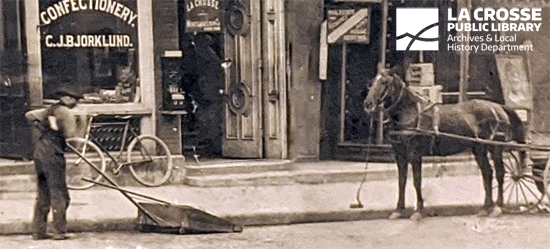
A rare view of street sweeper in action in a formal photograph of 1889 on the 300 block of Main Street. Photo courtesy of the Leithold family and altered for clarity.
Let's say you are an upwardly mobile businessman about 1890 and want to build a new house that fits your social status. Your wife wants one of those new porte cochères that are appearing on the big houses of the wealthy, like on the Holway house. Translated literally, "porte cochère" it means a carriage porch. Think of a porte cochère as an 1890s car port, a covered space adjoining the house that keeps you dry while loading and unloading from the buggy or when your friends come for a visit in the winter.
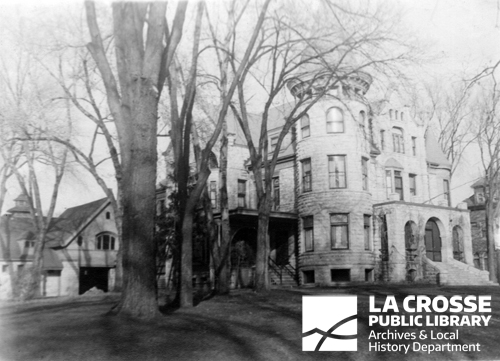
The Nymphus and Jesse Holway House at 1419 Cass Street showing the carriage house on the left and the porte cochère through the tree trunks. The drive came up from the street and continued northerly as it does today on the west side of the house to the porte cochère, then onto the carriage house.

A current (2021) view of the porte cochère at the Holway House

From the Elmore Holway Photo Albums, this scene shows the size of the sleigh relative to the carriage house at 1419 Cass Street. The carriage house sported two entrances opposite each other, just large enough for the sleigh or a buggy to enter and exit on the alley without turning around, so the team could be unhitched from the alley side and the carriage could stay covered.

A current (2021) view of the carriage house at the Holway House from the alley
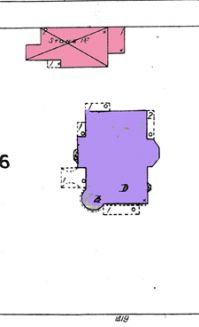
A Sanborn Fire Insurance Map from 1906 showing the size of the carriage house (highlighted in purple) relative to the size of the mansion (highlighted in pink). Unfortunately, the driveways are not reflected in Sanborn maps.
No sense in having a porte cochère if you don't have a horse and buggy. There are some horses available at a reasonable price at Lockman's Livery stable and the La Crosse Wallis Carriage company makes a variety of buggies, wagons and carriages. It would be nice to have a horse, to take rides, run errands and go to church. Of course, you would still walk to work or take the streetcar, no sense hitching up a horse when you can walk; it's hardly a mile. Besides, at work there is no place for a horse and buggy unless you are the boss.
Your builder says a porte cochère will be no problem, as fancy as you want. But what about the driveway? Can't just leave it as dirt. Ruts in the spring and fall, dust in the summer, and mud most of the year. The rich people lay stone, but that's expensive. Could use planks but they are slick in the rain and in winter. A horse could easily break a leg and upset the buggy. Gravel is an option; six to eight inches of gravel would carry away the rain and snow melt. But you can't clean horse manure out of gravel. Best think about a manure catcher for your horse, there are several on the market now. I know, they are ugly, awkward and most horses don't like them, but you can't have the horse dumping on the gravel driveway.
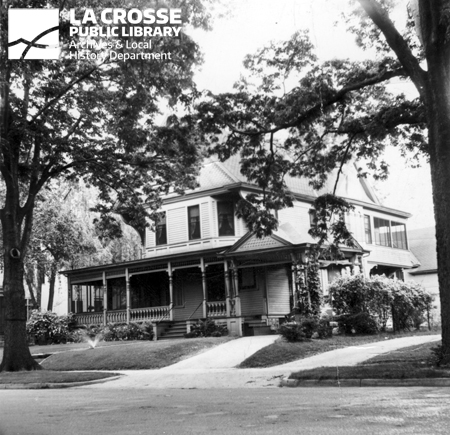
The Henry and Caroline Esperson House at 1414 Cass Street was built in the Queen Anne style in 1887-1888 and sports a porte cochère that is connected to the front porch. Photo taken by Roy Kumm, circa 1948
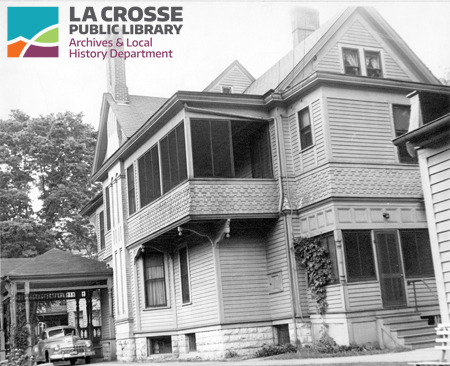
The view of the house from the rear shows the drive from the porte cochère to the carriage house that sits on the alley and was remodeled as a mixed-use garage and family entertainment space. Photo taken by Roy Kumm, circa 1948

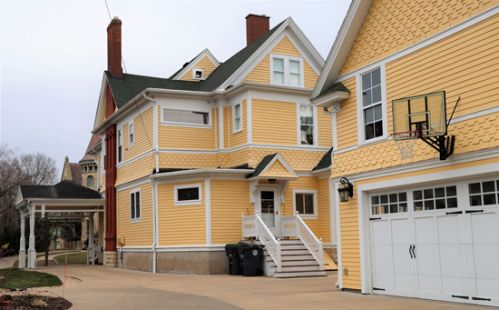

Current (2021) views of the Esperson House today

The 1906 Sanborn Fire Insurance Map showing the outline of the residence in purple and the carriage house in pink
You've also got to pave your backyard. A hitched horse on your buggy will take up about eighteen feet. A horse and buggy going through the porte cochère must turn around somewhere unless your driveway continues all the way to the alley, either way means more stone for paving and fences with gates to be opened and closed. That's also going to mess up your plans for a vegetable and flower gardens.
Of course, you will also need a stable. Best to put it back on the alley, away from the house, smells and flies you know. Since this is a city horse, it won't have much opportunity for pasture. You will need to buy and store a large quantity of hay. About half of a modern rectangular hay bale per horse or 20 pounds of hay per day, and some corn to supplement the lack of green grass. Plenty of water, morning and night; in summer, more water and in winter you've got to be very careful carrying those buckets from the well or pump, or your apron or trousers will get very stiff.

The Easton family was wealthy and is shown here in this photo displaying their vast home and part of their estate at 1305 Cass Street. INSET: A horse and buggy are shown in the front yard along with family members.
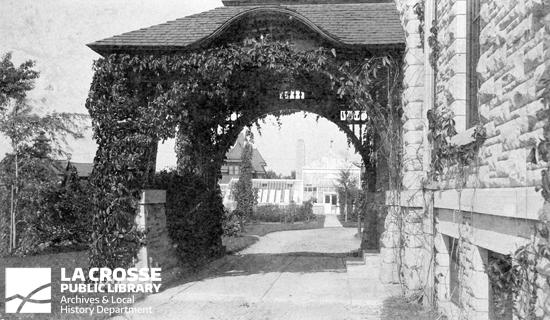
A close up of the porte cochère of the Easton mansion that looked directly north to the vast complex of greenhouses on the estate.
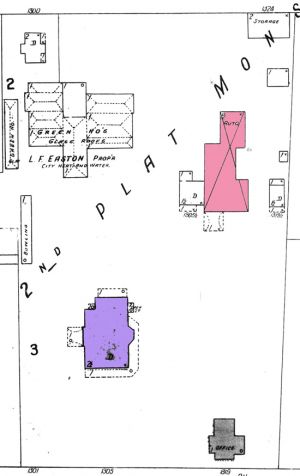
The 1906 Sanborn Fire Insurance Map outlines the large Easton estate, including the main house highlighted in purple and large stable highlighted in pink.
Oh yeah, you are going to need straw. Lots of straw. Your stable has a dirt floor but after a year or two that dirt is saturated and won't drain. What is politely called 'bedding' is really straw to soak up those several gallons of urine I mentioned earlier. Horses standing in wet bedding get hoof rot, so you've got to clean out the mixture of manure and wet straw every day. After cleaning you'll need 70-80 pounds of new straw depending on the size of the stall.
Where do you put 40 pounds of manure and twice that much wet straw? In the alley of course. I have no evidence but I'm pretty sure that there were people who picked up your manure piles and hauled it to the fields beyond the city limits. The livery stables would have a major manure problem of their own and may have included home pick up for a monthly fee.
Later that night it occurs to you that someone is going to have to muck out that stall and carry several loads in a wheel barrow out to the alley so the guy with a wagon can charge you a fee before he sells it to a farmer.
So, how does it all add up? Porte cochère, buggy, side flaps for rainy weather, a horse, vet bills, horse shoes, bridle, reins, harness for the horse, fly screen for the horse, horse blanket, people blankets for winter, a sleigh for winter travel, ropes, leather soap, leather oil, curry combs, brushes, wheel barrow, high top boots, buckets, shovels, rake, hay fork, manure fork, lots of hay, even more straw, corn, lots of drinking water.
Do you really want to feed a horse twice a day and come home every night after work and spend a half hour cleaning the stall and hauling the manure of a horse you use twice a week?
Maybe a porte cochère isn't such a great idea after all.
Addendum written by Anita Taylor Doering, Archives staff
Many upper middle-class homes that were under construction did incorporate a porte cochère into the design of the house. The Holway House at 1419 Cass Street and the Easton House (not extant) at 1305 Cass Street both included a separate entrance into the side of the house from the porte cochère. The Esperson House at 1414 Cass Street included the porte cochère as an extension of the front porch. Guests would enter the front or main entrance of the house, and it didn’t affect the traffic flow inside the house or require expensive remodeling once the fad passed.
By the mid-1910s, this concept largely disappeared with new construction, as automobiles began to replace the horse for the middle- and upper-class families. Still, the La Crosse standard was a separate garage opening to the alley and not physically connected to the house. This changed overtime as the ranch style house became a popular option in the 1960s/1970s for new construction. Below are some former barns and carriage houses that have survived and been converted to garages and other purposes that can be found in the historic districts of 10th and Cass and Cass/King streets. Enjoy!
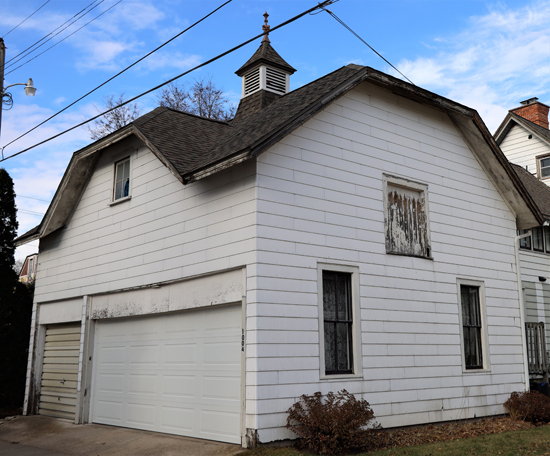
1004 Cass Street shows the cupola atop the roof of the former barn allowed air to circulate. Also visible is the door to the hay loft on the right side. These barns contained space for a horse or two, maybe a buggy, and hay and straw to be stored above which is why they are taller than more modern garages.
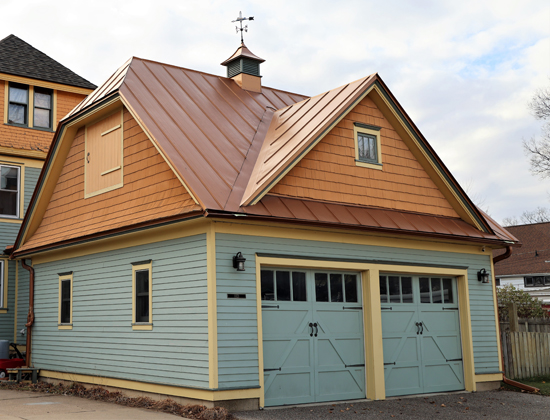
A current (2021) view of the carriage house at 1023 Cameron Avenue has many of the same elements and roof line of the one at 1004 Cass Street
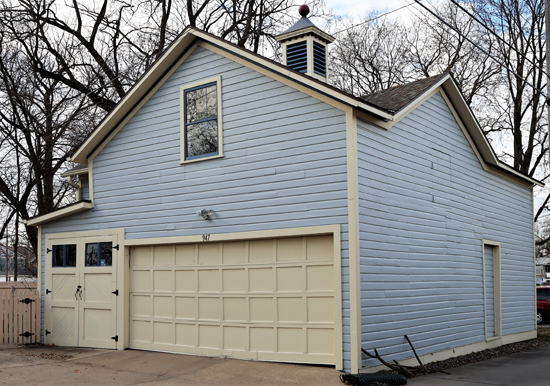
A current (2021) view of the carriage house at 947 Division Street
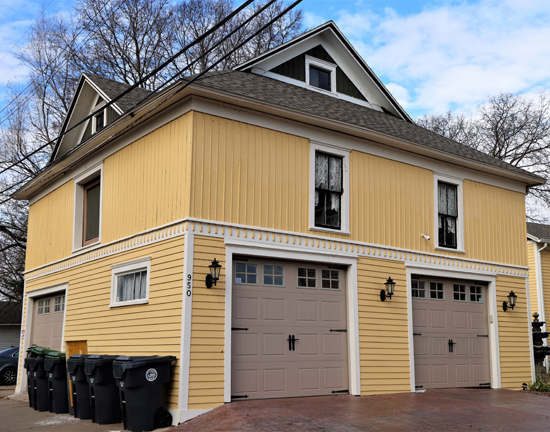
A current (2021) view of the stately carriage house of the Bentley-Wheeler House at the southwest corner of 10th and Cass streets
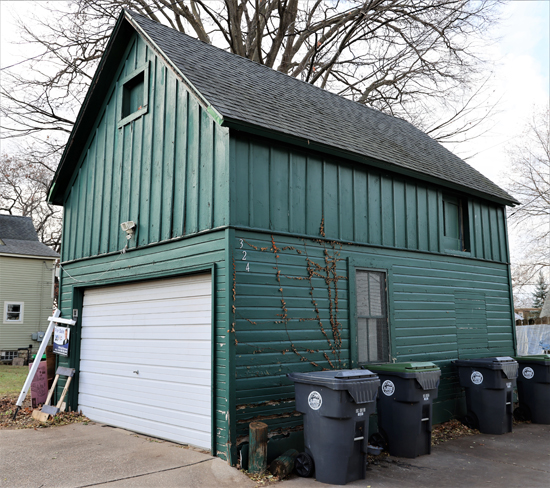
A current (2021) view of a more modest stable attached to 324 So. 10th street
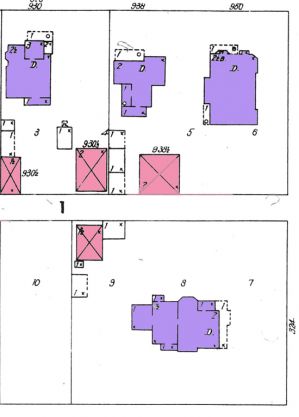
The 1906 Sanborn Fire Insurance Map of this Cass, South 10th and Cameron Avenue block showing barns/stables/carriage houses in pink and residences in purple.
